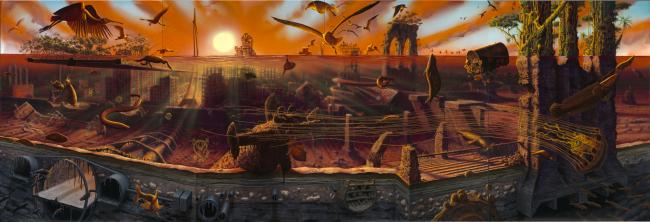To provide observations and information on the emerging fields of landscape scale conservation, heritage preservation, and sustainable community development.
Newsletter
Stay up-to-date with the latest nature, culture and community news.
We won’t spam you or share your information. Newsletters are sent approximately 10 times a year. Unsubscribe at any time.
Take Notice: Trending for Large Landscapes
Partners in Caring for Land

Stemming the Tide: Global Strategies for Sustaining Cultural Heritage Through Climate Change
In March 2020 Smithsonian sponsored a symposium to tackle two perspectives on the climate crisis’s impact on cultural heritage – the threat to the resources and the value of these resources as a source of resilience for communities to address climate change. The gathering brought together a lineup of inspiring speakers to empower cultural heritage authorities, managers, and advocates to pursue more ambitious engagement and collaborative approaches with to the threat of climate change. This discussion is more relevant than ever.

The 2016 Federal Budget: How did Large Landscapes Fare?
After months of uncertainty, weeks of negotiations and two short-term extensions to keep the government open, Congress passed and the President signed the 2009 page omnibus spending Bill, titled the Consolidated Appropriations Act of 2016. How did federal initiatives that support landscape scale work and fund our natural and cultural conservation program fare?
Long Landscapes: How Big is Big Enough?
The conservation movement has embraced the idea of preserving large landscapes as the only way to provide the necessary resilience and protection for the world’s ecosystems challenged by climate change and the impacts of global development. But how large a landscape is large enough?
New Report: Climate Change Threatens United States’ most cherished historic sites
Rising seas, floods, and wildfires are threatening the United States’ most cherished historic sites.
What Makes Us Take on Large Landscape Conservation?
In this first of a two part series, author Amy Rosenthal, secretary of the board of the Amazon Conservation Association, explores the history, contemporary challenges and benefits of working on a landscape-scale in the southwest Amazon. As the scale and rate of industrial development in the region grow exponentially, local communities and associations, place-based nonprofits and other collaborators have come together to plan and execute an ambitious initiative to address the environmental and human needs of this unique place.

Stemming the Tide: Global Strategies for Sustaining Cultural Heritage Through Climate Change
In March 2020 Smithsonian sponsored a symposium to tackle two perspectives on the climate crisis’s impact on cultural heritage – the threat to the resources and the value of these resources as a source of resilience for communities to address climate change. The gathering brought together a lineup of inspiring speakers to empower cultural heritage authorities, managers, and advocates to pursue more ambitious engagement and collaborative approaches with to the threat of climate change. This discussion is more relevant than ever.

The 2016 Federal Budget: How did Large Landscapes Fare?
After months of uncertainty, weeks of negotiations and two short-term extensions to keep the government open, Congress passed and the President signed the 2009 page omnibus spending Bill, titled the Consolidated Appropriations Act of 2016. How did federal initiatives that support landscape scale work and fund our natural and cultural conservation program fare?
Long Landscapes: How Big is Big Enough?
The conservation movement has embraced the idea of preserving large landscapes as the only way to provide the necessary resilience and protection for the world’s ecosystems challenged by climate change and the impacts of global development. But how large a landscape is large enough?
New Report: Climate Change Threatens United States’ most cherished historic sites
Rising seas, floods, and wildfires are threatening the United States’ most cherished historic sites.
What Makes Us Take on Large Landscape Conservation?
In this first of a two part series, author Amy Rosenthal, secretary of the board of the Amazon Conservation Association, explores the history, contemporary challenges and benefits of working on a landscape-scale in the southwest Amazon. As the scale and rate of industrial development in the region grow exponentially, local communities and associations, place-based nonprofits and other collaborators have come together to plan and execute an ambitious initiative to address the environmental and human needs of this unique place.


